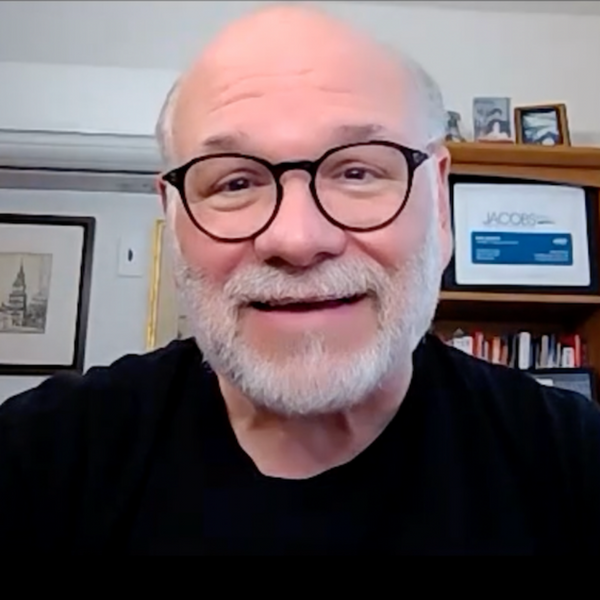Leadership Lessons From 2021
By Ken Jacobs
November-December 2021
If you’re like me, then you thought that once we survived 2020, 2021 would be much easier.
I found 2021 a little crueler than the previous year, because by June I was thinking “OK, numbers look good, life will start its return to normalcy this fall.”
But July, August and the Delta variant disagreed.
Regardless, you’ve survived the year. And if you’re open to it, the year has taught us a number of leadership lessons. Here are some of the top ones that I believe will serve us into 2022:
Emotional Intelligence (EI) remains the most important skill for leaders who want to be effective.
With everything your teams, your clients, your bosses, your peers and your stakeholders have been through, they may be at the end of their emotional rope, even as we see some light at the end of the tunnel.
Emotional Intelligence, called emotional quotient or EQ by some, is “the ability to understand, use and manage your own emotions in positive ways to relieve stress, communicate effectively, empathize with others, overcome challenges and defuse conflict.”
I trust it’s self-evident how the above skills will encourage people to follow you, regardless of your title or role.
Transparent leaders reassure their followers.
Leaders sometimes hold back from sharing potentially frightening news with their followers during uncertain times, for fear it will spook them. This is despite the fact that being upfront with our teams actually creates a sense of emotional security.
Transparent leaders who were willing to say something to the effect of “We can’t be sure, because we’ve never experienced this before. But we believe that this is the right way forward, and I need you in the boat with me” were rewarded with team members who actually followed them, and who were engaged in the effort.
And when a leader has that, they can weather many storms.
Courage is more important than ever.
While 2020 might have felt frightening, 2021 certainly felt uncertain.
And during frightening, challenging or simply uncertain times, followers are attracted to courageous leaders. That’s because they want the security of following someone who we believe will get us over to the other side.
By embracing their own courage, these leaders encouraged their followers to do the same.
We still don’t know what the new normal will look like, or when we’ll actually experience it. (Or perhaps this is it!)
Your courage as a leader will keep your team focused on the work at hand until we get there. Wherever “there” is.
The Big Quit is here: Learn how to manage it.
If your organization hasn’t yet been hit by the Big Quit, then it’s inevitable that it will be.
That’s because this isn’t just some trend created by pop culture forecasters, but the result of a number of factors: The economy’s rebound, the increasing ascendancy of millennials and Gen Z in the labor force, and the fact that the global COVID-19 pandemic has made millions of employees, regardless of industry category, question what they want from their careers and their work organizations.
There were survey predictions of it in April. For some it started by the summer. For others it was in full swing by the fall.
If you don’t yet have a plan in place to help minimize The Big Quit’s impact on your organization, please finish reading this article, and then create the plan.
Leaders must play an active role in their team’s physical, mental and emotional health.
Related to the paragraph above, employees today, especially younger millennials and Gen Z, want more from the workplace than previous generations, and will leave if they don’t get it.
In addition to a sense of purpose — something that merits its own article — these generations want their organization’s support for their physical, mental and emotional health.
That means you as leader must play an active role here, assuring that your organization is doing just that.
And it’s really not that big an ask. My friend and fellow Strategies & Tactics columnist Mark Mohammadpour, APR, has written here about the benefits of health to an individual. Organizations full of healthy employees, or employees who make good health a priority, are, well healthier.
They’re capable to withstand the aforementioned uncertainty, and, like you, they’re better able to, pivot when needed.
What’s more, they’re more engaged, and more loyal to their supervisor and to the organization. And in the age of “The Big Quit,” that’s more precious than gold.
Leaders must be agile, nimble and flexible.
If in the fall of 2019 someone had written a screenplay including what was actually going to happen over the next two years, they would have been laughed out of Hollywood.
But the screenplay happened. And certain related leadership attributes rose to the top: Agility, Nimbleness and Flexibility.
Leaders in areas like health care, employee and internal communications, and crisis management had to be nimble enough to manage huge workloads with teams that were soon at their limit, and over many months.
Those in areas like travel, brick and mortar retail and commercial real estate, often had to pivot into different categories in order for their agencies or their organizations and careers to survive.
Regardless of location or category, leaders had to expertly guide their organizations and followers through situations for which there was no playbook: working from home, helping children with virtual learning, and a workforce that was losing family and friends to COVID-19.
Agility, nimbleness and flexibility were critical parts of the leadership playbook that they created.



